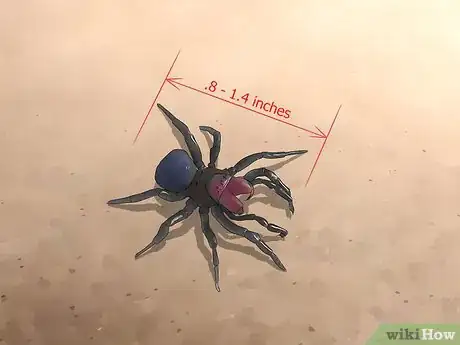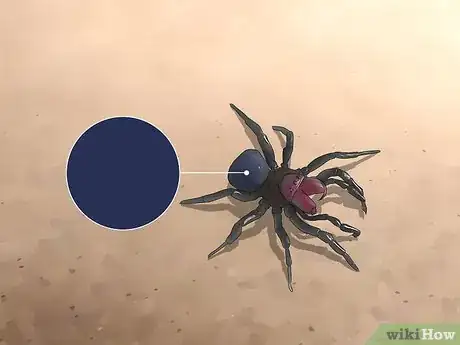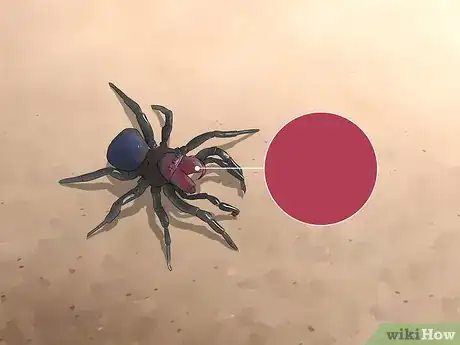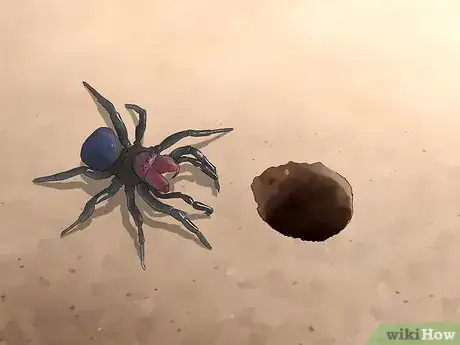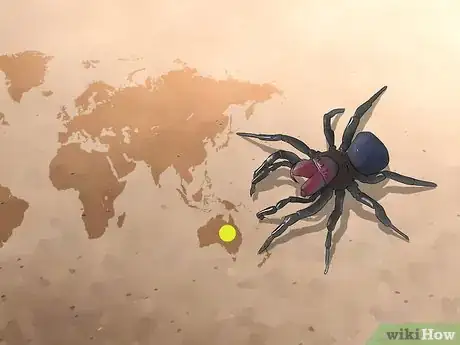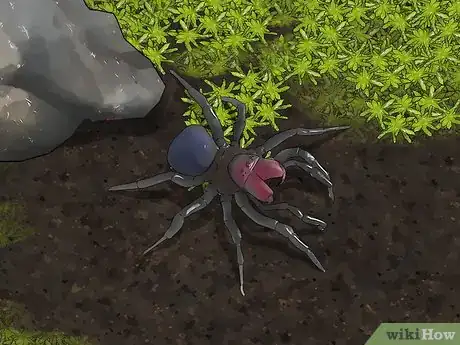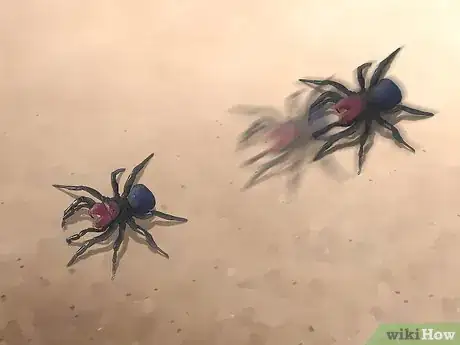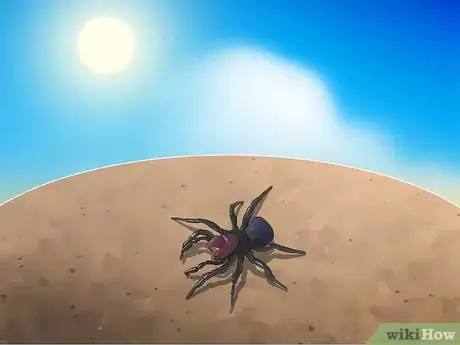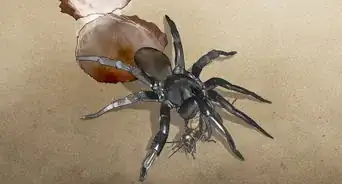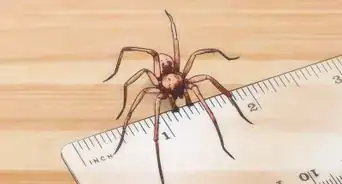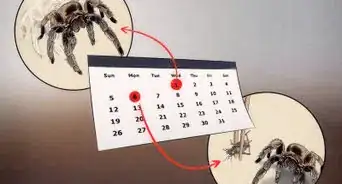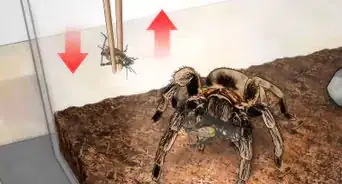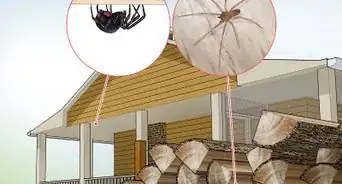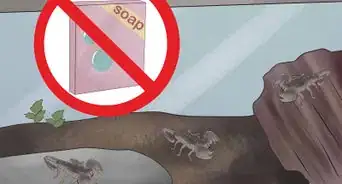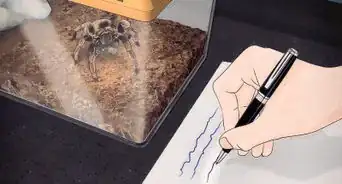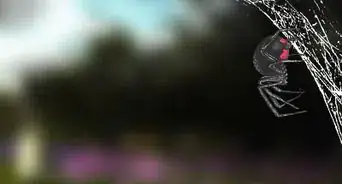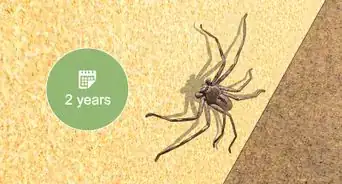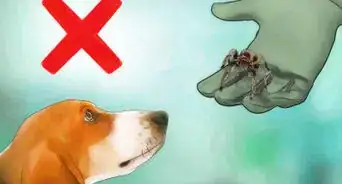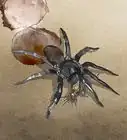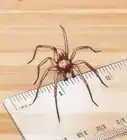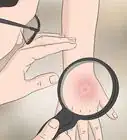This article was co-authored by wikiHow Staff. Our trained team of editors and researchers validate articles for accuracy and comprehensiveness. wikiHow's Content Management Team carefully monitors the work from our editorial staff to ensure that each article is backed by trusted research and meets our high quality standards.
This article has been viewed 108,630 times.
Learn more...
Mouse spiders are highly venomous spiders named because they look a lot like small rodents. They tend to be dark black or brown and move very fast, like a small mouse. Mouse spiders live almost exclusively in Australia, but are often confused with a harmless species of spider, Scotophaeus blackwalli. Ultimately, by looking for the physical features of mouse spiders, watching for them in their habitat, and observing their behavior, you’ll be better able to identify a mouse spider.
Steps
Observing the Spider's Physical Features
-
1Look for thick and stocky legs. Since the mouse spider is a ground spider, they have very thick and stocky (almost muscular) legs. Female mouse spiders, too, have thicker legs than male spiders. In addition, the male mouse spider may have long palps that appear as an extra pair of legs.
-
2Check to see if they are 20 to 35mm (.8 to 1.4 inches) long. Both male and female mouse spiders range between 20 to 35 mm in body length. The females, however, tend to be toward the longer part of this range.Advertisement
-
3Watch for a dark blue, black, or dark brown body. Male mouse spiders are dark blue or black in appearance. Female mouse spiders tend to be dark brown in color. However, there is some variation between the 8 different species of mouse spiders.
-
4Look to see if the front of the spider is bright red. Male mouse spiders can be either red or black on the front of their body. This bright red color is a tell-tale sign of certain mouse spider species and should not be dismissed as another sort of spider.
-
5Look for short spinnerets. Spinnerets are the part of the spider’s body that typically spins the web. They are found near the front/head of the spider. Although Mouse spiders don't spin webs, they do have very short spinnerets.[1]
- The last section of mouse spider spinnerets appears button-like or dome-like.
Finding the Spider's Habitat
-
1Look for a burrow. Mouse spiders dig their homes – burrows – into the ground. Burrows can be identified by the pyramid-shaped mounds of soil that are often found beside them.
- Burrows are often characterized by a small hole in the ground with two right angle side-tunnels jutting off almost immediately. The side tunnels may then go straight down and may have a chamber that breaks off from the main tunnel.[2]
-
2Find the spiders in Australia. Mouse spiders live exclusively in Australia. They do not, however, live in Tasmania. While they have been exported and introduced elsewhere, there is no evidence that breeding populations exist outside of their native range.[3]
-
3Watch for mouse spiders in populated areas. Mouse spiders live throughout Australia and are common in populated, suburban areas, outside of the cities. Their burrows can be found in suburban yards, in pastures, in parks, and elsewhere.[4]
-
4Look for mouse spiders in different ecosystems. Mouse spiders live throughout Australia. They inhabit forest environments and dry arid environments. As a result, they can potentially live in just about every climate in Australia.[5]
Observing the Spider's Behavior
-
1Watch for mouse spiders on the ground. Mouse spiders do not spin webs, and as a result, are often found on the ground. In their range, they can be observed on the floor in dark areas of the home. Thus, if the spider is spinning a web, it is probably not a mouse spider.[6]
-
2Observe the spider running. Mouse spiders are active and vigorous hunters. You may see them wandering at night chasing their prey. In fact, mouse spiders can run quite fast.[7]
-
3Look for spiders on the move in the day time. While many species of mouse spiders are night time hunters, they can also be very active in the daytime. This is especially true during the late summer, fall, and early winter. In addition, you may see mouse spiders moving around during the day after a heavy rain.[8]
Community Q&A
-
QuestionCan I keep a mouse spider in a container outside on my porch?
 Community AnswerIts probably not advisable. If it escapes, it could hurt you, a pet, or a member of your family.
Community AnswerIts probably not advisable. If it escapes, it could hurt you, a pet, or a member of your family. -
QuestionWhat does a pregnant mouse spider look like?
 Community AnswerThe mouse spider reproduces by laying eggs. There is no possibility for a mouse spider to become pregnant.
Community AnswerThe mouse spider reproduces by laying eggs. There is no possibility for a mouse spider to become pregnant. -
QuestionDo mouse spiders eat dead wasps?
 Community AnswerNo, all spiders eat live bugs, but baby spiders will sometimes salvage dead bugs.
Community AnswerNo, all spiders eat live bugs, but baby spiders will sometimes salvage dead bugs.
Warnings
- Both male and female Mouse spiders are dangerous and both will bite you if you provoke them.⧼thumbs_response⧽
- Female Mouse spiders are not aggressive, but they will lunge at anything that passes by their burrow.⧼thumbs_response⧽
References
- ↑ https://australianmuseum.net.au/mouse-spiders
- ↑ https://nt.gov.au/__data/assets/pdf_file/0002/200000/mouse-spiders.pdf
- ↑ http://www.qm.qld.gov.au/Find+out+about/Animals+of+Queensland/Spiders/Primitive+Spiders+Infraorder+Mygalomorphae/Mouse+Spiders#.WUK6nIWcFPY
- ↑ https://nt.gov.au/__data/assets/pdf_file/0002/200000/mouse-spiders.pdf
- ↑ https://australianmuseum.net.au/mouse-spiders
- ↑ http://web.pdx.edu/~smasta/MastaSpidersHome.html
- ↑ http://web.pdx.edu/~smasta/MastaSpidersHome.html
- ↑ https://australianmuseum.net.au/mouse-spiders
About This Article
If you live in Australia and you’re not sure whether a spider is a mouse spider, examine it for thick, stocky legs and a dark blue, black, or brown body that’s between 20-35mm long. If it has these characteristics, it may be a mouse spider. Also, if the front half of the body is bright red, it’s probably a mouse spider, although some mouse spiders are black instead of red. If you’re still not sure, observe the spider to try to find a burrow nearby. If you see the spider in a web, it’s not a mouse spider. For tips on how to identify a mouse spider’s behavior, read on!

